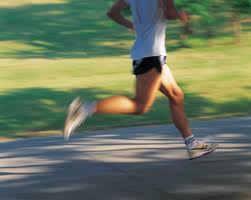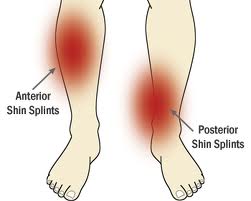 Are you a runner or a dancer? Are you in the military? Do you have a throbbing, aching pain in the shins of your legs? If so, you may have shin splints.
Are you a runner or a dancer? Are you in the military? Do you have a throbbing, aching pain in the shins of your legs? If so, you may have shin splints.
Shin splints – also called tibial stress syndrome – are a common lower leg complaint, especially among runners, dancers, athletes and people in the military. It usually develops after:
- Vigorous exercise when you overexert your muscles
- Sudden changes to your exercise routine, such as running for longer distances or increasing the number of days you exercise.
- Changing the surface you run on, such as grass to asphalt or running on hills.
- Wearing worn-out athletic shoes that don’t have enough shock absorption.
Plus, if you have flat feet, you may have increased stress on your lower leg muscles when you exercise, leading to shin splints. Repetitive activity can lead to small tears in your leg muscles where they attach to the shin bone, causing inflammation of the muscles, tendons and bone.
 Shin splints are characterized by pain and tenderness along the front and inside part of your shin. Sometimes you may develop small bumps and tender areas next to the shin bone. The pain can become intense if the condition is not treated. Your shins may become painful to the touch, and your feet may feel weak or numb.
Shin splints are characterized by pain and tenderness along the front and inside part of your shin. Sometimes you may develop small bumps and tender areas next to the shin bone. The pain can become intense if the condition is not treated. Your shins may become painful to the touch, and your feet may feel weak or numb.
Early diagnosis and treatment is important since your pain can intensify if your shin splints are left untreated. Plus, you can develop stress fractures or tiny, hairline breaks, in your lower leg bones.
Treatment may involve:
- Several weeks of rest from the activity that caused the shin splints.
- Icing your shins to reduce pain and swelling.
- Anti-inflammatory painkillers, like ibuprofen, naproxen or aspirin.
- Physical therapy to strengthen the muscles in your shins and increase your range of motion.
- Neoprene sleeve to support and warm your leg.
- Arch supports, like ezWalker® Performance Insoles, provide the arch support you need to correct overpronation or flat feet. ezWalkers® are customized insoles that strategically raise the arches in your feet providing you with the proper biomechanical support your individual feet need. You feet will be better biomechanically aligned, so each step will be controlled throughout the gait cycle, reducing the stress on your shins.
- Surgery, in extremely rare cases.
To prevent shin splints:
- Wear shoes with good support and padding.
- Warm up slowly and stretch thoroughly before you exercise.
- Slowly ramp up your training
- Stop exercising immediately, if you feel pain. Rest and ice your shins.
For more information on ezWalker® Performance Insoles, visit our website. These insoles are ultra thin and ¾ in length so they will fit in all your shoes. They come with a 90-day, money-back guarantee, so you’ve got nothing to lose but your shin splint pain. Try ezWalker® Performance Insoles today!
Because … when your feet feel good, you feel good.

